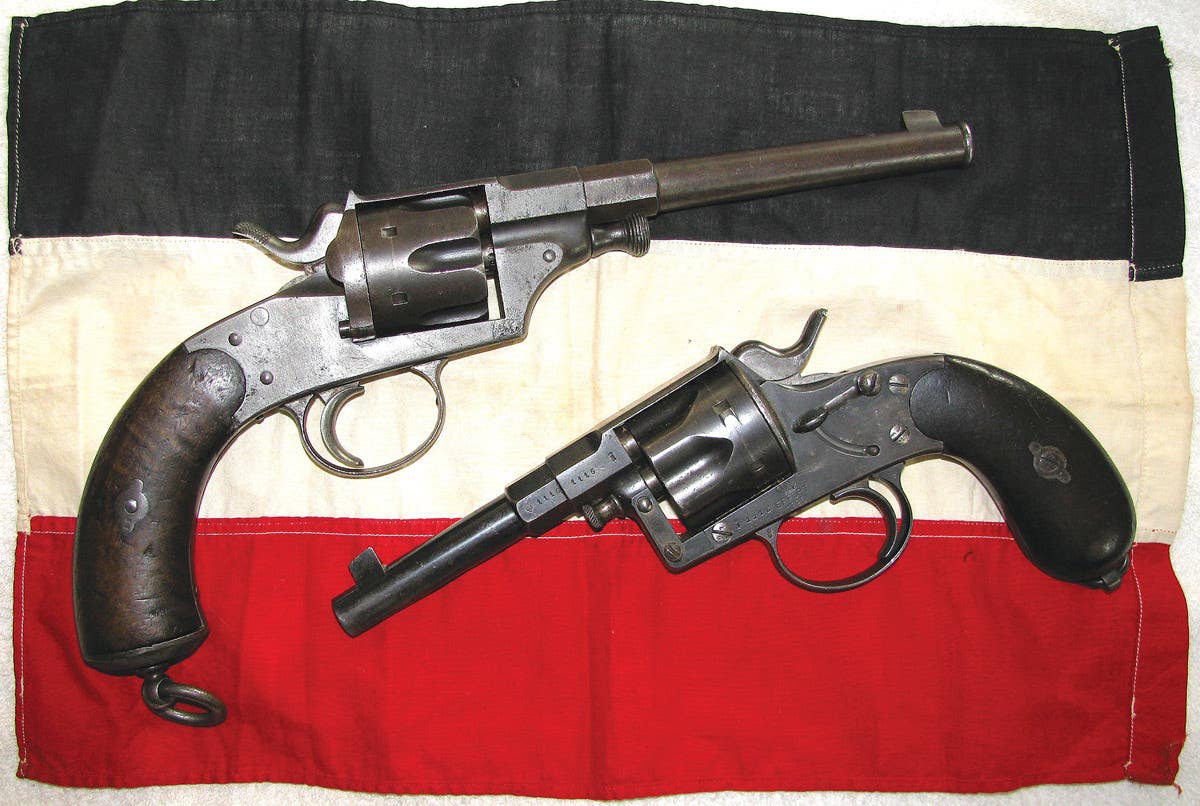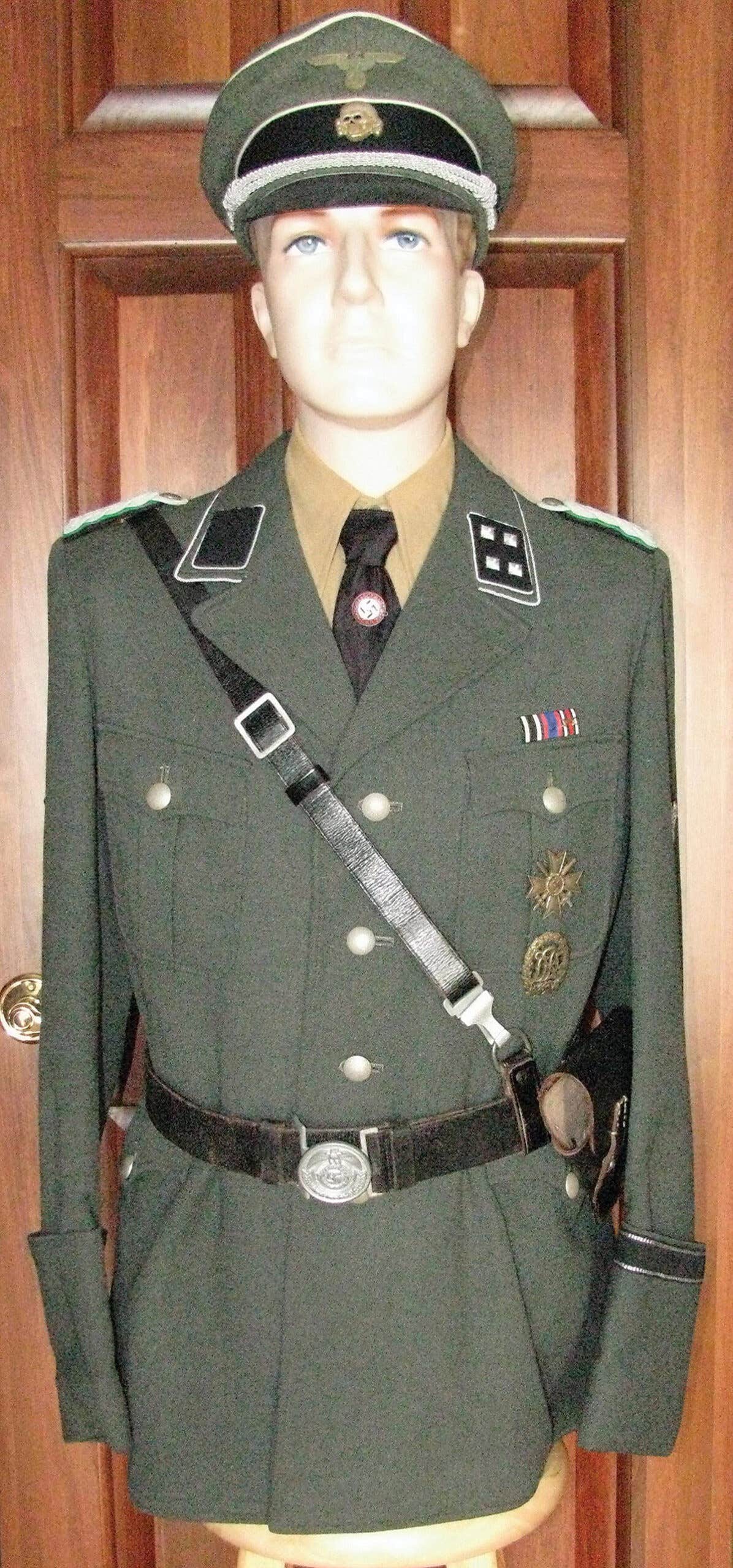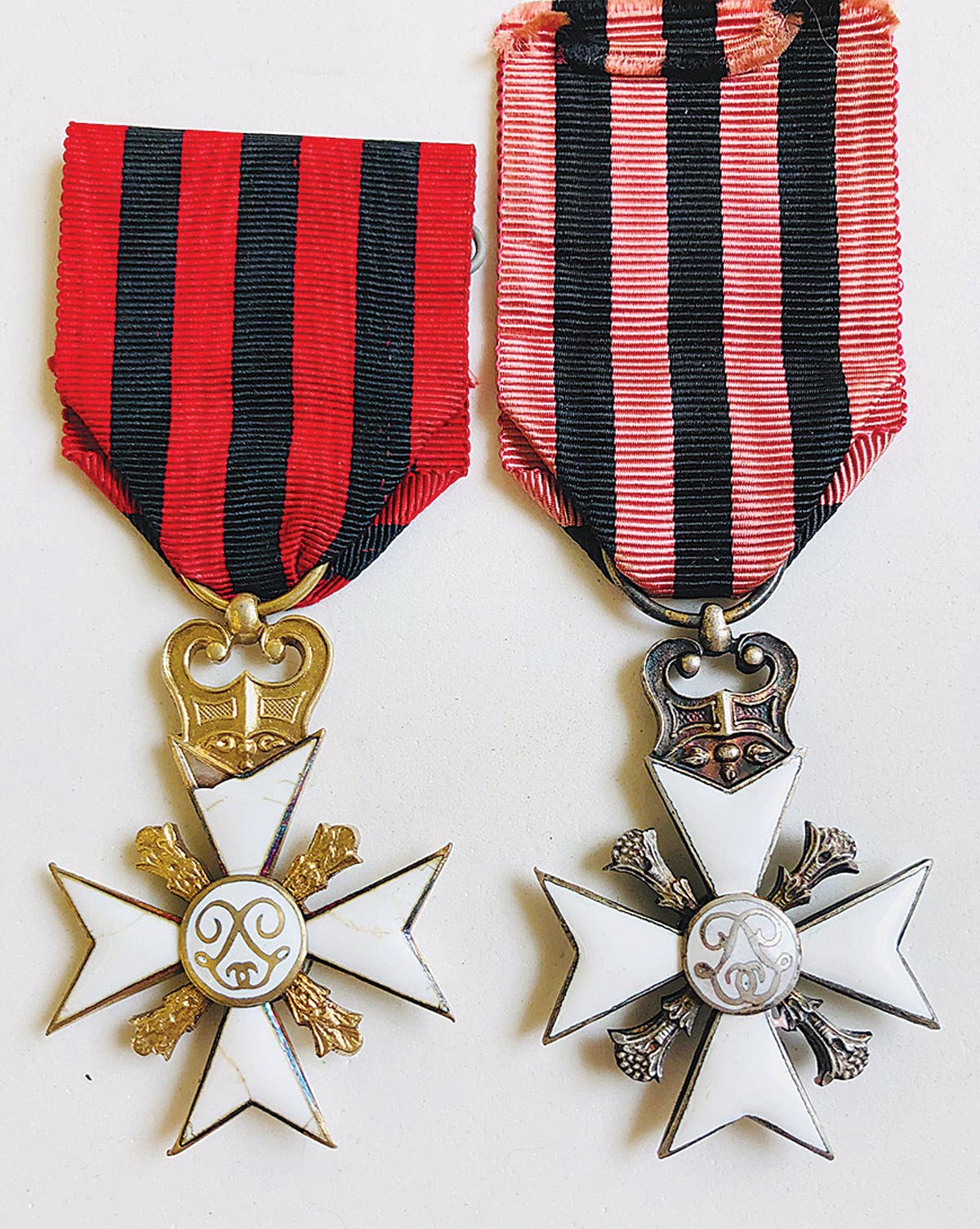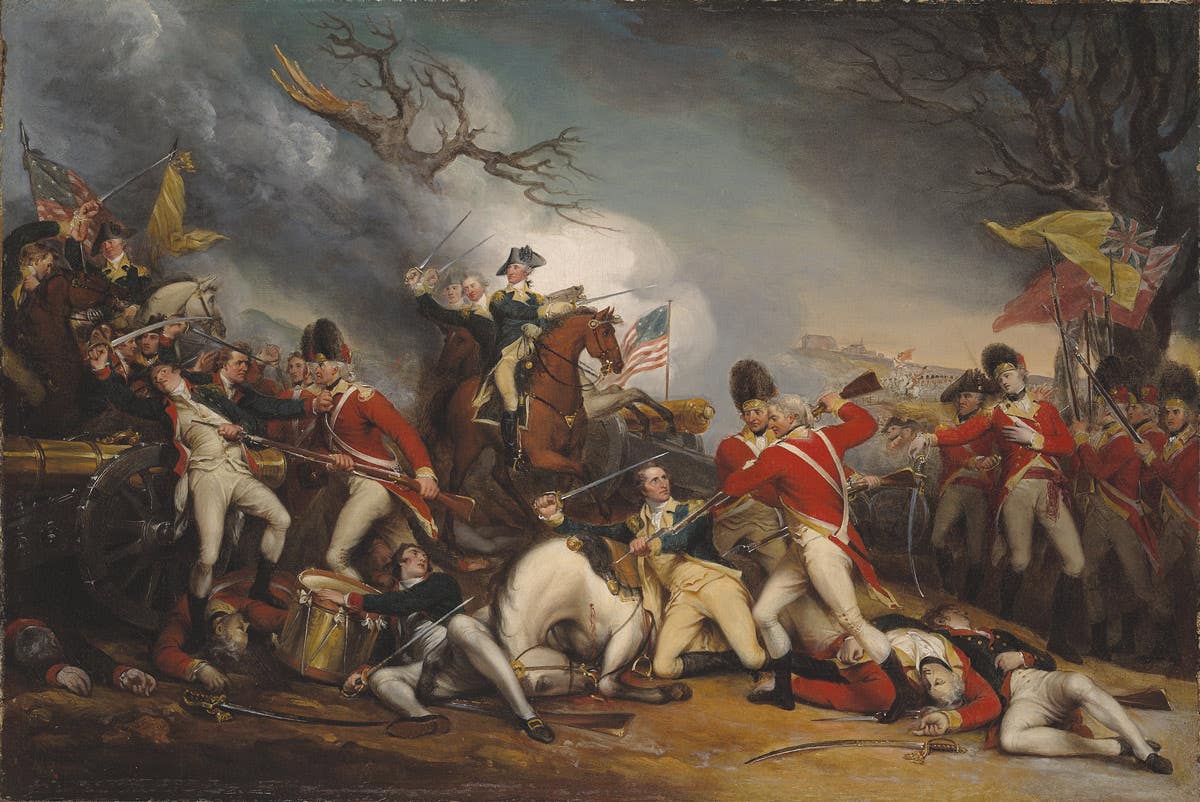A Look at the Model 1917 Enlisted Medical Belt
The very beginnings of the model 1917 enlisted medical belt can be traced as far back as December 1913 when a small group of medical officers formed a board to address the problems of the modern medical equipment in the battlefield.
The very beginnings of the model 1917 enlisted medical belt can be traced as far back as December 1913 when a small group of medical officers formed a board to address the problems of the modern medical equipment in the battlefield. Up to this time, a large satchel, called the Hospital Corps Pouch, was slung over the enlisted field medic’s shoulder and tucked into a belt fastened around his waist. The large Model 1904 medical bolo was also carried on the belt on the opposite side. This equipment was very bulky because the bolo was heavy and unmanageable in size, and the straps, tucked into the belt, kept from the free movement of the pouch. This configuration also made the equipment very hard to mount on horseback when needed for troop movements in the field.
An article published in the Military Surgeon (January 1916), outlines the proposed equipment the hospital corps would be considering for use. The guidelines called for the new medical field equipment to be used in conjunction with the new model equipment released to the infantry and the cavalry about this same time.
The board finally chose a belt as the most practicable adoption for sanitary troops to carry medical supplies into the field.
One of the hardest challenges for this new belt was its construction since the equipment was of all sizes and shapes: not a problem when carried in the previous large pouch. This obstacle was soon overcome by making the pockets on the belt basically one size, with all of the new supplies conforming to pocket size.
The largest and most important change was the addition of carrying more of the first aid bandages. This was the most important item to help in the treatment of wounded. It was then increased from the simple four carried in the hospital corps pouch to 10 in the enlisted medical belt.
This would lead to modification of the first aid packet. The new bandage would be sized to allow two to fit in each of the eight center belt pockets, and one each in the end two smaller pockets. To keep these bandages from getting confused with the metal-cased type carried by the individual soldiers, the name was changed to “individual dressing packet” (from the metal “first aid packet” issue type). These new bandages were easier to open, cheaper to produce and lighter to carry in the belt.
CONTENT DETAILS
Starting first from the left front pocket when worn, this pocket had a smaller one inside and was one-half the depth of pockets two through nine in size. It contained a roll of adhesive plaster, and one field tourniquet. The smaller pocket held one dozen safety pins on card for securing bandages.
Adhesive plaster has been noted from Bauer & Black manufacture as well as Seabury’s in the 1-inch by 5-yard size being correct for this belt. The next nine center pockets were double in thickness to carry up to two bandages or an equivalent in size of other items.
The second pocket contained two boxes of premixed iodine swabs. These are one of the hardest items for collectors to obtain for this belt.
The iodine swabs was a new change to the equipment by having the ampoules premixed and ready for use in one snap of the glass. Previously, the iodine came in a dry ampoule form and had to be mixed with fluid. This took much effort and the mixture would not be consistent with each use. Two manufacturers of this have been noted from the author, Bauer & Black, and Young’s Iodine swabs. They were identical in manufacture and the way they were used. Each of the two boxes contained six individual one-time use ampoules.
Pocket number three contained two corrosive sublimated gauze bandages compressed in waxed boxes. These were used as a bandage to help some wounds drain better without infection setting in fast. They took the place of carbolized bandages and sutures. Once again only two manufacturers of this have been noted for the enlisted medical belt: Bauer & Black and Seabury’s by Johnson & Johnson. Both appear to have the first early contracts of May 1917.
The next five pockets, number four through eight, are all on the back of the belt and contain only one type of item: the individual dressing packet. Because it was kept in the back of the belt made it easy for the medic to reach back and always know what item he was pulling out. These packets were manufactured exclusively for use with this belt and thus were not encased in metal. Instead, they were always wrapped in a white oilcloth type wrapper. The first contract in May of 1917 appears to have been produced by Wilford Hall Laboratories. Then in July 1917, a Bauer & Black contract appeared and took over until the end of the war with three more contract dates ending in August 1918. Also, a Johnson & Johnson contract of February 1918 exists.
Pocket number nine contained six packets of gauze bandages. These bandages came in three noted sizes, 2-1/2”, 3”, and 3-1/2” by 6-yard packages. Only two major manufacturers have been noted by the author: Bauer & Black and “Zonas” by Johnson & Johnson, both contract marked. It can also be noted that the regulation of 1918 did not state what sizes were carried and they may have placed a couple of each of the three sizes inside to fill the pocket to the top.
Pocket number 10, the last pocket on the front right of the medical belt, was once again half the size of the larger eight and also divided into two parts. It contained an Aromatic spirits of ammonia flask with cup, and in the smaller front divided section common type pins on a paper was kept. This paper full of pins usually had about 12 dozen or so pins in all, and folded into place in the pocket.
The ammonia flask was issued clear, unlike the officer’s amber color that held a morphine solution. Also unlike the officers’ flask, the enlisted man’s flask was issued with a small cup that fit on the bottom of the bottle, this way the ammonia could be poured into the cup for mixing and general use, keeping the bottle from evaporation and spillage of fluids. This bottle can also be found with a hard rubber type stopper to prevent the ammonia from further evaporation.
It has been noted many times by the author that these bottles can be found in the belts with or without the cups and stoppers. Also, they have been observed with aluminum and a heavier nickel type lid. They have been seen amber in color with cup and also in clear glass and with cup.
The changes that occurred due to the new requirements of the equipment also discontinued the use of the model 1904 medical bolo. This was solved by adapting the common infantryman’s field axe to the belt. Authorization was given to reduce the handle in a working fashion to 12 inches in length to keep it from dragging or hitting while horse mounted. This axe was issued with the standard carrier of the infantry and placed on the left side of the belt. This change to the axe was noted to be very cost effective over the bolo, and the practical uses of an axe greatly outnumbered the bolo.
Another change that occurred with issuance of the new medical belt came about as a result of the new Model 1910 canteen, that was too tall to hang on the belt without pushing into the bottom of the rear pocket and damaging bandages or the belt. This was solved by the addition of a small web extension hanger specifically manufactured for the enlisted medical belt. Before this switch the old model 1904 canteen was issued to field medics carrying the old hospital corps pouches.
The last item attached as issued to the enlisted man’s belt was a large pouch similar to the M1910 first aid packet carrier. This pouch had a small case containing a set of dressing forceps and a pair of scissors.
Unlike the hospital corps pouch, the enlisted medic’s belt now carried a book of diagnosis tags. Prior to this, it was the job of an officer to fill out these forms on the battlefield so that surgeons in the rear hospitals would know what treatments had been given on the front line.
The large amount of wounded, however, made it almost impossible for one front line officer to reach all of the patients and place a diagnosis tag on them. The decision for the enlisted man to carry these tags came from the thought that it was better for enlisted personnel to fill out a diagnosis tag in the field than to have no tag accompanying the wounded at all. This book was issued with a small pencil with metal cap to be carried in the pouch as well.
There are two types of pouches noted by the author. The very first few months of production Mills produced the pouch with trimmed corners in the front. By mid 1917 the front flap changes to the commonly seen squared corners. Manufacturers noted for the medical pouch are Mills, L.C.C, and Long. The later two manufacturers appeared in mid-1918.
The model 1917 enlisted medical belt has been seen with only a few noted major variations. The earliest issued belts were manufactured by Mills Woven Belt Company. A May 1917 issued belt has been observed by the author to have internal snaps connected to a strap, similar to the infantry cartridge belt of the era, allowing for easier removal of the bandages. This was apparently soon dropped for faster production. The first Mill’s medical belts were manufactured with the new “lift dot” type fasteners. The Mill’s snap fasteners changed in the early to mid part of 1918 to the eagle snap fasteners. This took place at the same time as the other known manufacture, R. H. Long, started to manufacture their belts. It is unknown why they changed to the earlier type eagle snap fastener later on, but it was perhaps to keep a difference in manufacturers noticeable.
The last major variation of the M1917 enlisted medical belt noted by the author is the rarely seen early pea-green belt with trimmed rounded pockets and completely unmarked. This belt has sewn-on pockets like the other two manufacturers, but these pockets are quite smaller in width. It has the “lift dot” type fasteners as well. It is unknown at this time, but the author feels this could be one of the 500 belts noted in the Military Surgeon article of 1916. It states that in 1915 they were produced and used as field trials. The simple rougher construction and early color could be construed as this being an earlier manufacture, although this is only speculation at this time.
A final interesting note on this belt appeared in another Military Surgeon article in 1920. It covered the lessons learned in WWI and noted that a medic would now be taught to crawl under fire instead of standing and removing the wounded. The medic would have to “drag” the patient to a safe place and work.
This article also brought harsh words for the new belt. First, it said the belt did not hold enough bandages. Second, “with the thick belt around one’s waist, crawling is rendered very difficult.” The writer then stated, “A strong, old fashion canvas pouch or hunting bag” is ideal; ironically, this is what they used before the new belt.
CONCLUSION
Like any great military collectible, the model 1917 enlisted medical belt can be very enjoyable to those who like hunting for its original contents. The items to complete these belts can still be found from time-to-time and are still at a fairly reasonable price. Seldom will you find a complete one on the marketplace for sale, but the look and feel of a full enlisted man’s medical belt in your collection is worth the challenge that waits.
For more information:
*Equipment list used in this article have been taken from the Manual for the Medical Department 1916, Washington Government Printing Office, 1918.
*Articles and abstracts used in article have been taken from The Military Surgeon, Volume #38 (1916) and Volume #46 (1920), Washington D.C.







